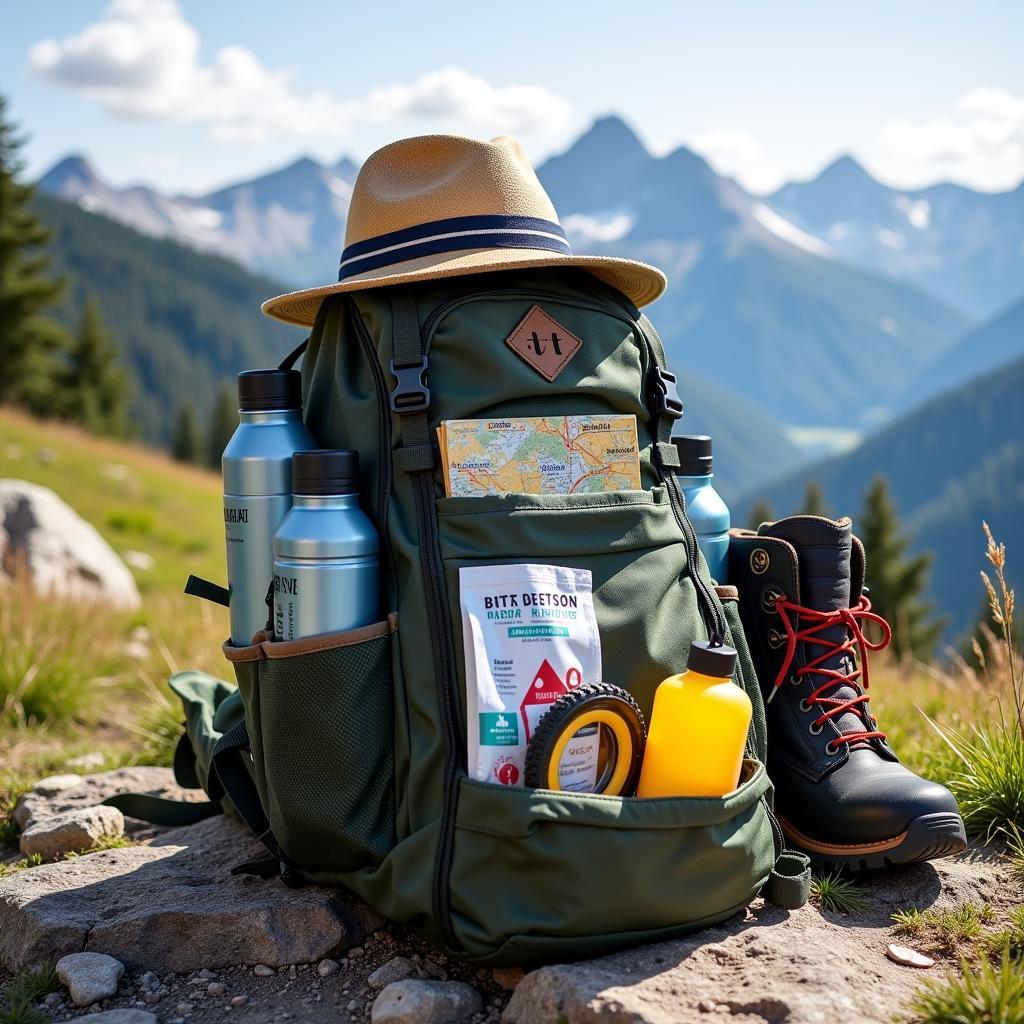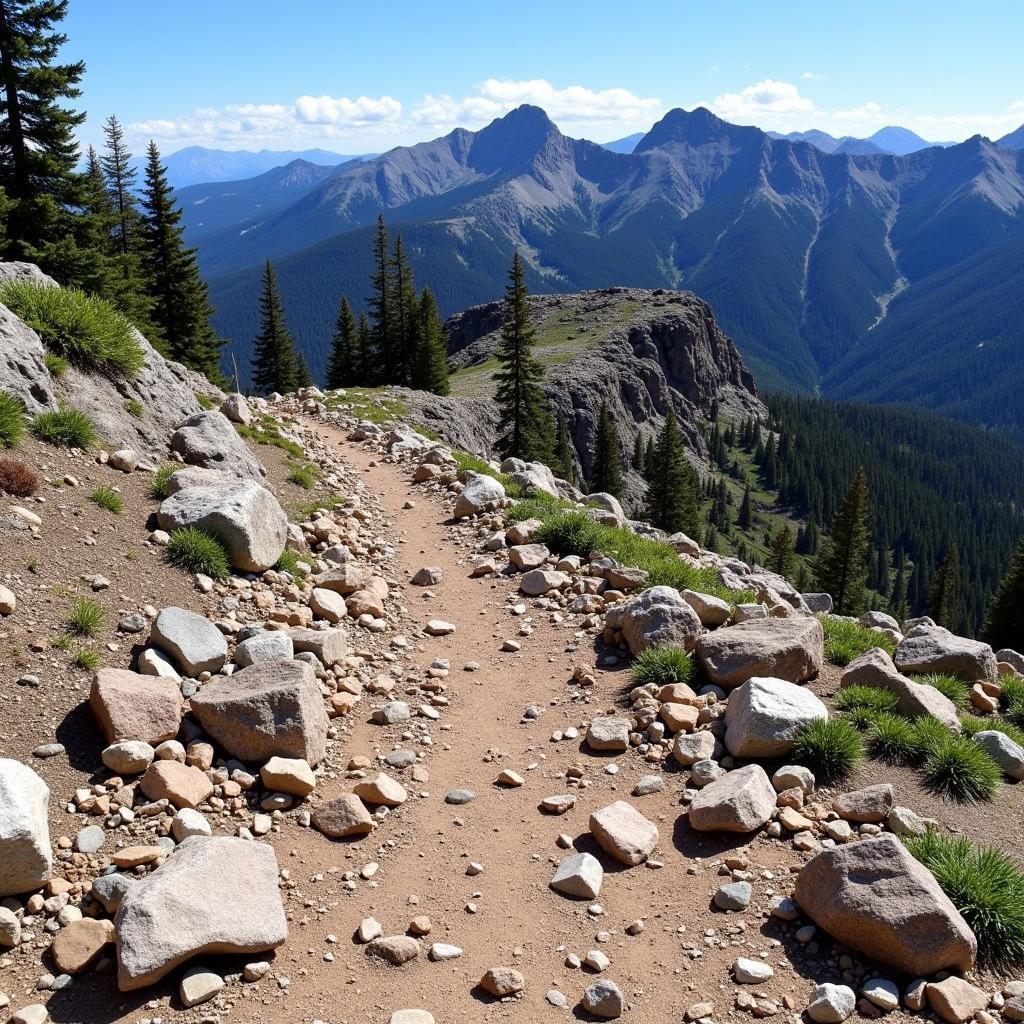Dead Horse Pass in the Uintas Mountains offers breathtaking scenery and challenging hiking. This iconic location draws adventurers from all over, eager to experience its rugged beauty and rich history. From its unique geological formations to the diverse flora and fauna, Dead Horse Pass offers a memorable experience for all who venture into its wild embrace.
Unraveling the History of Dead Horse Pass
The name “Dead Horse Pass” is steeped in local lore. While the exact origins remain shrouded in mystery, several stories attempt to explain the somber moniker. One popular tale recounts a group of horses perishing during a harsh winter storm while traversing the pass. Another story speaks of horses being abandoned or dying due to exhaustion after a long journey. Regardless of the true origin, the name adds a touch of intrigue to the already captivating landscape. Understanding the history of Dead Horse Pass enhances the visitor experience, providing a deeper connection to the area.
The Geology of Dead Horse Pass
The Uinta Mountains, where Dead Horse Pass is located, are unique in their east-west orientation. This geological peculiarity contributes to the distinctive landscape of the pass, characterized by steep slopes, rocky terrain, and dramatic cliffs. Formed through millions of years of uplift and erosion, the area showcases a fascinating variety of rock formations. Hiking through Dead Horse Pass allows visitors to witness firsthand the power of nature’s sculpting hand.
Hiking to Dead Horse Pass: A Guide
Planning a hike to Dead Horse Pass requires careful preparation. The trails can be challenging, and weather conditions can change rapidly. Knowing what to expect ensures a safe and enjoyable experience.
Essential Gear for Your Hike
- Sturdy hiking boots: The terrain is rocky and uneven, making proper footwear crucial.
- Water bottles or hydration pack: Staying hydrated is essential, especially at higher altitudes.
- Layers of clothing: The weather in the mountains can be unpredictable.
- Sunscreen and hat: Protection from the sun is important even on cloudy days.
- Navigation tools: A map and compass or GPS device are recommended.
- First-aid kit: Be prepared for minor injuries.
 Essential Hiking Gear for Dead Horse Pass
Essential Hiking Gear for Dead Horse Pass
Trail Conditions and Difficulty
The trails leading to Dead Horse Pass vary in difficulty. Some trails are steep and rocky, presenting a challenging climb for even experienced hikers. Others are more gradual, offering a less strenuous ascent. Researching different trail options beforehand is vital to choosing a route that matches your fitness level.
 Dead Horse Pass Trail Conditions
Dead Horse Pass Trail Conditions
What Makes Dead Horse Pass Unique?
Dead Horse Pass stands out from other mountain passes due to its combination of stunning scenery, challenging trails, and rich history. The panoramic views from the top of the pass are truly breathtaking, offering a rewarding experience for hikers who reach the summit.
Flora and Fauna of the Uintas
The Uinta Mountains are home to a diverse array of plant and animal life. Hikers might encounter elk, deer, marmots, and a variety of bird species. Wildflowers dot the meadows during the summer months, adding vibrant color to the landscape. Respecting the natural environment and observing wildlife from a safe distance is crucial to preserving the ecosystem.
Dead Horse Pass: A Rewarding Adventure
Dead Horse Pass offers a truly rewarding experience for those who seek adventure in the Uintas. From its unique geological formations and challenging trails to its breathtaking views and rich history, Dead Horse Pass remains an iconic destination for outdoor enthusiasts. Planning and preparation are essential for a safe and enjoyable trip, ensuring a memorable experience in the heart of the Uintas.
FAQ
- What is the best time to hike to Dead Horse Pass? Summer and early fall are generally the best times due to favorable weather conditions.
- Are there camping facilities near Dead Horse Pass? Yes, several campgrounds are located in the Uinta Mountains, providing options for overnight stays.
- How long does it take to hike to Dead Horse Pass? The hiking time varies depending on the chosen trail and individual fitness levels, ranging from a few hours to a full day.
- Are dogs allowed on the trails? Check specific trail regulations as some may have restrictions on pets.
- What are the altitude considerations for hiking at Dead Horse Pass? The high altitude can pose challenges for some hikers, so it’s important to acclimatize properly.
- What safety precautions should I take while hiking? Inform someone of your hiking plans, carry a map and compass, and be aware of changing weather conditions.
- Are there guided tours available for Dead Horse Pass? Yes, several outfitters offer guided hiking tours in the Uintas.
For further support, please contact us at Phone Number: 0772127271, Email: [email protected], or visit our location at QGM2+WX2, Vị Trung, Vị Thuỷ, Hậu Giang, Việt Nam. We have a 24/7 customer support team.